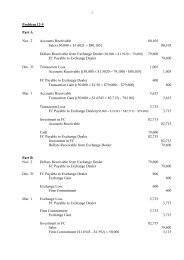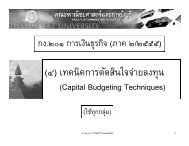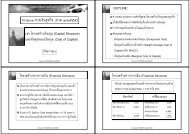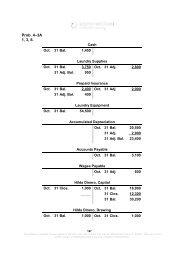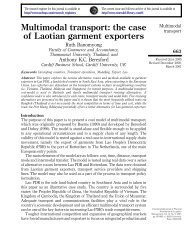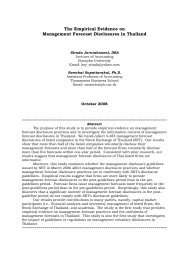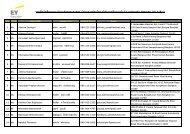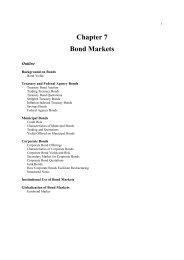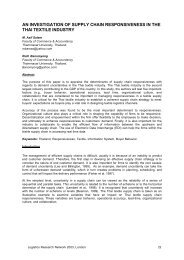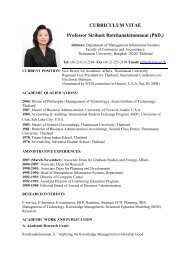Human capital and performance: A literature review
Human capital and performance: A literature review
Human capital and performance: A literature review
You also want an ePaper? Increase the reach of your titles
YUMPU automatically turns print PDFs into web optimized ePapers that Google loves.
firms with higher profits are more likely to implement profit sharing. However, if it can<br />
be demonstrated that employees in firms with profit sharing have different attitudes <strong>and</strong><br />
behaviours than those in firms without profit sharing. And that these differences also<br />
translate into different levels of customer satisfaction, productivity, speed to market <strong>and</strong><br />
so forth. As such, researchers can begin to have more confidence in the causal model’<br />
(Becker & Gerhart, 1996: 793).<br />
2. A good deal of work has emphasised the alignment of human resources to organisational<br />
strategies (e.g. a cost leadership strategy <strong>and</strong> a differentiation strategy). But the firmspecific<br />
contexts <strong>and</strong> contingencies surrounding the organisation will make HR alignment<br />
much more complex <strong>and</strong> idiosyncratic, <strong>and</strong> render generalisations about HR <strong>and</strong> human<br />
<strong>capital</strong> problematic.<br />
3. If human <strong>capital</strong> is, in a real sense, ‘best practice,’ why is it that some organisations lack<br />
human <strong>capital</strong> processes <strong>and</strong> yet are successful in their businesses Or, in other words,<br />
why doesn't everyone adopt human <strong>capital</strong> principles These are some empirical<br />
questions to be investigated. A simple answer would be that such firms may be successful<br />
now, but the possibility of sustaining their success is perhaps reduced by the degree of<br />
their failure to implement the human <strong>capital</strong> concepts. In general, we agree with Becker<br />
& Gerhart (1996) who state that ‘more effort should be devoted to finding out what<br />
managers are thinking when they make the decisions they do. This suggests a need for<br />
deeper qualitative research to complement the large scale, multiple firm studies that are<br />
available’ (1996: 786).<br />
Measuring human <strong>capital</strong><br />
From the foregoing discussion, Delaney & Huselid (1996) state that there is compelling<br />
evidence for a linkage between strong people management <strong>and</strong> <strong>performance</strong>. But how is<br />
human <strong>capital</strong> to be measured Measurement is obviously important to gauge the impact of<br />
human <strong>capital</strong> interventions <strong>and</strong> address areas for improvement, but in this field, measurement<br />
is a problematic issue.<br />
The process identified by some academics (e.g., Guest et al., 2000; Patterson et al., 1997) as<br />
well as a number of the consulting firms, is to specify the key human <strong>capital</strong> dimensions <strong>and</strong><br />
<strong>Human</strong> <strong>capital</strong> <strong>and</strong> <strong>performance</strong> 15



